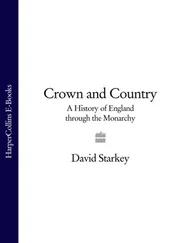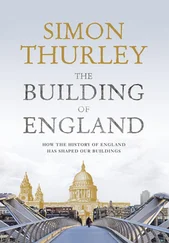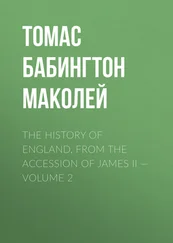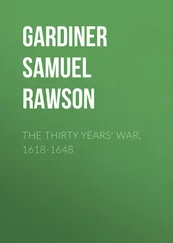Samuel Gardiner - A Student's History of England, v. 2 - 1509-1689
Здесь есть возможность читать онлайн «Samuel Gardiner - A Student's History of England, v. 2 - 1509-1689» — ознакомительный отрывок электронной книги совершенно бесплатно, а после прочтения отрывка купить полную версию. В некоторых случаях можно слушать аудио, скачать через торрент в формате fb2 и присутствует краткое содержание. Издательство: Иностранный паблик, Жанр: История, foreign_antique, foreign_prose, на английском языке. Описание произведения, (предисловие) а так же отзывы посетителей доступны на портале библиотеки ЛибКат.
- Название:A Student's History of England, v. 2: 1509-1689
- Автор:
- Издательство:Иностранный паблик
- Жанр:
- Год:неизвестен
- ISBN:нет данных
- Рейтинг книги:3 / 5. Голосов: 1
-
Избранное:Добавить в избранное
- Отзывы:
-
Ваша оценка:
- 60
- 1
- 2
- 3
- 4
- 5
A Student's History of England, v. 2: 1509-1689: краткое содержание, описание и аннотация
Предлагаем к чтению аннотацию, описание, краткое содержание или предисловие (зависит от того, что написал сам автор книги «A Student's History of England, v. 2: 1509-1689»). Если вы не нашли необходимую информацию о книге — напишите в комментариях, мы постараемся отыскать её.
A Student's History of England, v. 2: 1509-1689 — читать онлайн ознакомительный отрывок
Ниже представлен текст книги, разбитый по страницам. Система сохранения места последней прочитанной страницы, позволяет с удобством читать онлайн бесплатно книгу «A Student's History of England, v. 2: 1509-1689», без необходимости каждый раз заново искать на чём Вы остановились. Поставьте закладку, и сможете в любой момент перейти на страницу, на которой закончили чтение.
Интервал:
Закладка:
23. Solway Moss. 1542.– Henry was probably the more distrustful of a possibly independent Ireland because an actually independent Scotland gave him so much trouble. In Scotland there had been no Wars of the Roses, and the warlike nobility still resembled petty kings in their own districts. James V., the son of Henry's sister Margaret, strove to depress the nobles by allying himself with the Church and the Commons. Scotland was always ready to come to blows with England, and the clergy urged James to break with a king of England who had broken with the Pope. From 1532to 1534there had been actual war between the kingdoms. Even after peace was restored James's attitude was constantly menacing. In 1542war broke out again, and the Duke of Norfolk crossed the Tweed and wasted the border counties of Scotland. Then James launched an army across the Border into Cumberland. His distrust of the nobles, however, made him place at the head of it a mere court favourite, Oliver Sinclair. The Scottish army was harassed by the horsemen of the English border, and as night was drawing on was suddenly assailed by a small English party. Having no confidence in Sinclair, the whole multitude fled in a panic, to be slain or captured in Solway Moss. James's health broke down under the evil tidings. As he lay sick, news was brought to him that his wife had given birth to a child. Hearing that the child was a girl, and remembering how the heiress of the Bruces had brought the crown to the House of Stuart (see p. 295), he was saddened by the thought that the Stuart name also would come to an end. "It came with a lass," he murmured, "and it will go with a lass." In a few days he died, and his infant daughter, the Queen of Scots, received the name of Mary. 7
24. War with Scotland and France. 1542-1546.– Henry, anxious to disarm Scottish hostility, proposed a marriage between his son Edward and the young queen. The proposal was rejected, and an alliance formed between Scotland and France. In 1544Henry, having formed an alliance with Charles V., who was now at war with France, invaded France and took Boulogne after a long siege – thus enlarging the English possessions in the neighbourhood of Calais – whilst Charles concluded a peace with Francis at Crêpy and left his ally in the lurch. In the same year Henry sent Lord Hertford, Jane Seymour's brother, to invade Scotland. Hertford burnt every house and cottage between Berwick and Edinburgh, took Edinburgh itself, and burnt the town. In 1546peace was made between England and France, in which Scotland was included. The war had been expensive, and in 1544Parliament had come to Henry's help by enacting that he need not repay a loan which he had gathered, yet even then Henry had had recourse to the desperate remedy of debasing the coinage.
25. The Litany and the Primer. 1544-1545.– In 1544, when Henry was besieging Boulogne, Cranmer ordered prayers to be offered for his success. In the true spirit of the Renascence he wished these prayers to be intelligible, and directed that they should be in English. In the same year he composed the English Litany, intended to be recited by priests and people going in procession. This Litany was the foundation-stone of the future Book of Common Prayer. It was issued in 1544together with a Primer, or book of private prayer, also in English. In the public services the Creed, the Lord's Prayer, and the Ten Commandments were to be in English, the remainder being left in Latin as before.
26. The Last Days of Henry VIII. 1545-1547.– When once inquiring intelligence is let loose on an antiquated system, it is hard to say where the desire of making alterations will stop, and there are reasons to believe that Henry was contemplating further changes. There were two parties at court, the one anxious to resist further change, headed, amongst the temporal lords, by the Duke of Norfolk and his son, the Earl of Surrey, and amongst the bishops by Gardiner; the other, desiring doctrinal innovations, especially if money was to be got by them, headed by the Earl of Hertford. In 1545an Act had been passed for the dissolution of chantries, hospitals, and free chapels. The chantries had been founded for the maintenance of priests to say mass for the souls of the founders, and it was convenient for those who sought to divert this maintenance to their own use to believe that it was wrong to pray for the dead. In the end of 1546Henry was taken ill, and, feeling himself to be dying, ordered the arrest of Norfolk and Surrey on charges of treason. It is probable that Henry turned against Norfolk and Surrey because he thought Hertford, as the uncle of the young Prince of Wales, more likely to be faithful to the future king. On January 27, 1547, Surrey was executed. His father was to have suffered on the 28th. Before he reached the scaffold, Henry died, and he was conducted back to prison. Henry, before his death, had done something to provide against the danger of a disputed succession. An Act of Parliament, passed in 1544, had given back to Mary and Elizabeth the places in the line of inheritance to which they would have been entitled if no doubt had ever been cast on the legitimacy of their birth, 8and had authorised Henry to provide by will for the future occupancy of the throne in case of the failure of his own descendants. In accordance with this Act he left the crown, in case of such failure, to the descendants of his younger sister Mary, leaving out those of his elder sister Margaret, with whose son, James V., he had had so much reason to be displeased.
CHAPTER XXVII
EDWARD VI. AND MARY
EDWARD VI., 1547-1553. MARY, 1553-1558
• Somerset's Protectorate 1547
• First Prayer Book of Edward VI. 1549
• Fall of Somerset 1549
• Second Prayer Book of Edward VI. 1552
• Death of Edward VI. and accession of Mary 1553
• Mary's marriage with Philip 1554
• Submission to Rome and re-enactment of the heresy laws 1554
• Beginning of the persecution 1555
• War with France 1557
• Loss of Calais and death of Mary 1558
1. Somerset becomes Protector. 1547.– The new king, Edward VI., was but a boy, and Henry had directed that England should be governed during his son's minority by a body composed of the executors of his will and other councillors, in which neither the partisans of change nor the partisans of the existing order should be strong enough to have their own way. The leading innovators, pretending to be anxious to carry out his wishes, asserted that he had been heard to express a desire that they should be made peers or advanced in the peerage, and should receive large estates out of the abbey lands. After gaining their object, they set aside Henry's real plan for the government of the realm, and declared Hertford (who now became Duke of Somerset) to be Protector. A council was formed, from which Gardiner and the Lord Chancellor Wriothesley were excluded as likely to take part against them.
2. The Scotch War. 1547-1548.– Somerset was as greedy of Church property as the greediest, but he was covetous also of popularity, and had none of that moderating influence which Henry, with all his faults, possessed. He had always too many irons in the fire, and had no sense of the line which divides the possible from the impossible. His first thought was to intervene in Scotland. For some time past Protestant missionaries had been attempting to convert the Scottish people, but most of them had been caught and burnt. Cardinal Beaton, the Archbishop of St. Andrews, had lately burnt George Wishart, a noted Protestant. In 1546the Cardinal was murdered in revenge by a party of Protestants, who seized on the castle of St. Andrews. A French fleet, however, recaptured the castle, and Somerset, who had sent no help to the Protestants in St. Andrews, marched into Scotland in the hope of putting an end to all future troubles between the kingdoms by marrying the young Queen of Scots to Edward. He carried with him a body of foreign mercenaries armed with the improved weapons of Continental warfare, and with their help he defeated and slaughtered the Scotch army at Pinkie Cleugh, burnt Holyrood and Leith, and carried destruction far and wide. Such rough wooing exasperated the Scots, and in 1548they formed a close alliance with Henry II., who had succeeded Francis I. as king of France, and sent their young queen across the sea, where she was married to Henry's eldest son, the Dauphin Francis. Somerset had gained nothing by his violence.
Читать дальшеИнтервал:
Закладка:
Похожие книги на «A Student's History of England, v. 2: 1509-1689»
Представляем Вашему вниманию похожие книги на «A Student's History of England, v. 2: 1509-1689» списком для выбора. Мы отобрали схожую по названию и смыслу литературу в надежде предоставить читателям больше вариантов отыскать новые, интересные, ещё непрочитанные произведения.
Обсуждение, отзывы о книге «A Student's History of England, v. 2: 1509-1689» и просто собственные мнения читателей. Оставьте ваши комментарии, напишите, что Вы думаете о произведении, его смысле или главных героях. Укажите что конкретно понравилось, а что нет, и почему Вы так считаете.












